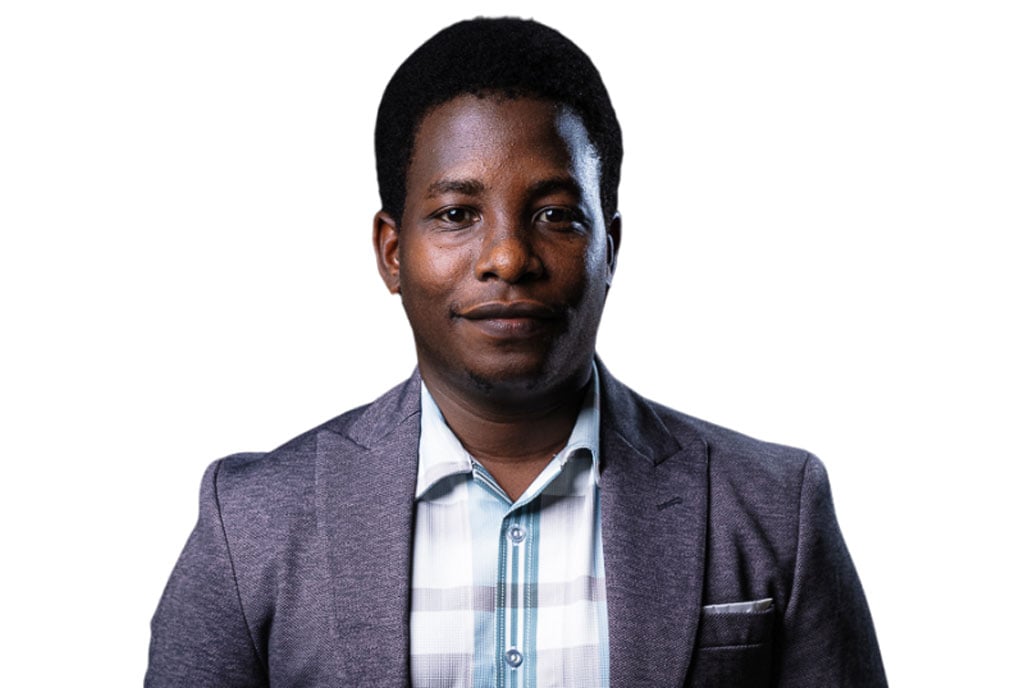Prime
Death of Chwa and rise of Muteesa II

Kabaka Muteesa II is robed with barkcloth and calf skin in 1939.
Last Friday marked 80 years since Kabaka Daudi Chwa II of Buganda died.
Chwa, the 34th king of Buganda, died on November 22, 1939, aged 43. The king had been in poor health for more than two years.
At the time of his death, the king was on a visit to his mother Namasole’s official residence at Lukuli in Makindye, Kampala. On the fateful day, he collapsed and died of heart failure in the presence of his mother and relatives. At the burial, Western culture superseded the traditional Kiganda norms.
Fredrick Lukyn Williams, a British historian and lecturer at then Makerere University College, documented the death of the Kabaka in the Uganda Journal of January 1940, Volume VII, No 4.
“When the death of Sir Daudi Chwa was reported, the Katikkiro, Omulamuzi and Omuwanika at once proceeded to Lukuli and had the body suitably wrapped in white cloth and carried, as was the custom, by hand to Mengo where it was placed in the council room of Twekobe (Kabaka’s house). Chiefs Kangawo and Mugerere were put in immediate charge of the body.”
Kabaka’s death announced
“On the evening of November 22 [1939], the Katikkiro announced to the people from the broadcasting stations in Kampala that the Kabaka had died that morning. The words used were that he had released his hold on the shield, Agye omukono mu ngabo,” Williams writes on page 177 of the publication.
Before the Uganda Broadcasting Service (Radio Uganda) was opened in 1954, there was the ‘Kampala radio’ stationed at current Bank of Uganda headquarters. It was not a radio station as we know it today, but rather “Ekizindalo” (megaphone) where the broadcaster would make announcements to a listening audience.
Afterwards, the announcements would be spread by word of mouth.
Buganda heir is informed
The heir apparent, Prince Fredrick Muteesa, was a student at the King’s College Budo. Traditionally, he had to be informed by the Kasujju (county chief of Busujju).
“Towards the close of this eventful day, at 6pm, Muteesa, who was at school at King’s College Budo, was brought to the Lubiri by the Kasuju to perform the ceremony of ‘Okubika akabugo’. This was the first duty of the heir to the throne and consists of looking on the face of his father and then covering the body with barkcloth,” William writes.
After performing that ritual, Muteesa was returned to Budo to be guarded until his enthronement.
In the afternoon of the following day, November 23, the Katikkiro officially informed the Governor of Uganda of the death of Chwa and the election of Muteesa II as Kabaka.
The government’s sympathy was expressed by the governor and the election of Muteesa was approved. Muteesa was himself introduced to the governor who expressed personally his sympathy at his loss and spoke a word of encouragement to him on undertaking his new duties and responsibilities.
On November 24, 1939, Chwa’s body was washed and prepared for burial by two female relatives from Namasole’s clan.
A lined coffin was specially made by the Public Works Department. The following day at 8am, the coffin was carried out of Twekobe and placed in a specially prepared motor hearse which proceeded at a walking pace along the King’s Way to Namirembe Cathedral.
The hearse was preceded by the royals, while members of the 7th Battalion of the King’s African Rifles, Boys Brigade, Scouts, thousands of mourners and spectators lined along the way from Twekobe to Namirembe church.
Traditionally, the king’s body would have been carried by hand from Twekobe to the burial site. But because the times had changed, that did not happen.
“The decision to convey the coffin from the Lubiri to Namirembe Cathedral and then to Kasubi by hearse and not by hand, thus breaking with all previous custom whereby the body was carried by hand, feet first, was not taken without due consideration,” Williams writes.
“It was felt, however, that as time was an import factor in a modern State funeral, the enormous weight of the coffin which would have to be carried over three miles and the excitability of the unprecedented crowds, might so delay the cortege as to bring it to a complete standstill, and so no other means of transport could be considered suitable for the occasion.”
The pall-bearers were Gombolola chiefs selected by the Kago for the occasion. They carried the coffin from the hearse to the cathedral where it was met by the Bishop of Uganda, conducted to the chapel steps and placed on the bier which was draped with a purple pall.
The coffin was covered with the Buganda flag, on which were placed his orders, decorations and his crown, engule.
The main speech was given by Dr Albert Cook, who had known the late Kabaka since he was a baby. In church, everyone from all walks of life was represented as the church was filled to capacity.
After the service and shortly before the procession to Kasubi royal tombs, 43 gun salutes were fired, one for each year the Kabaka had lived.
Procession to Kasubi tombs
At the Kasubi Tombs, the procession was met by Bishop Leslie Brown, and the governor’s representative, among other dignities, at the gateway of the enclosure surrounding Muzivu-Azaala Mpaga (the main hut).
“But the people had become so dense that it was only with the utmost difficulty, in spite of the greatest help from the police, that the coffin could be removed from the hearse and carried through the entrance of the enclosure,” Williams writes.
“It was only as the coffin was being carried to its final resting place that the wail of mourning arose in increasing volume from the crowd, which in the precincts of Muzibu-Azaala-Mpaga was composed largely of women.”
After the coffin had been taken into the building, the doors were closed to keep out the crowd. A limited number of mourners and visitors of all races were allowed at the graveside where the last rites of the church were performed by the bishop.
The Public Works Department staff then assisted in the lowering of the coffin into the grave. After the burial, the tomb was not filled in or covered for three days so that the people could file past and pay their last respects to the late Kabaka.
Muteesa becomes king
On November 25, 1939, at about 3pm, the accession ceremony took place. During the function, Muteesa was officially proclaimed new king of Buganda.
The enthronement took place outside the main gate, Wankaki, of the Lubiri. The Katikkiro then led the new Kabaka from the Lubiri, accompanied by Prince Juma Katebe of Kibanga in Bulemezi and the new Lubuga.
About Kasubi tombs
The historic Kasubi Tombs in March 2010 went up in flames, engulfing the main building housing the mausoleums of four former Buganda kings. Efforts by the public and police to snuff out the fire at that 130-year-old royal tombs were futile. The kings buried at the tombs include:
Muteesa I (1835-1884)
Basamula Mwanga II (1867-1903)
Daudi Chwa II (1896-1939)
Fredrick Muteesa II (1924-1969)




